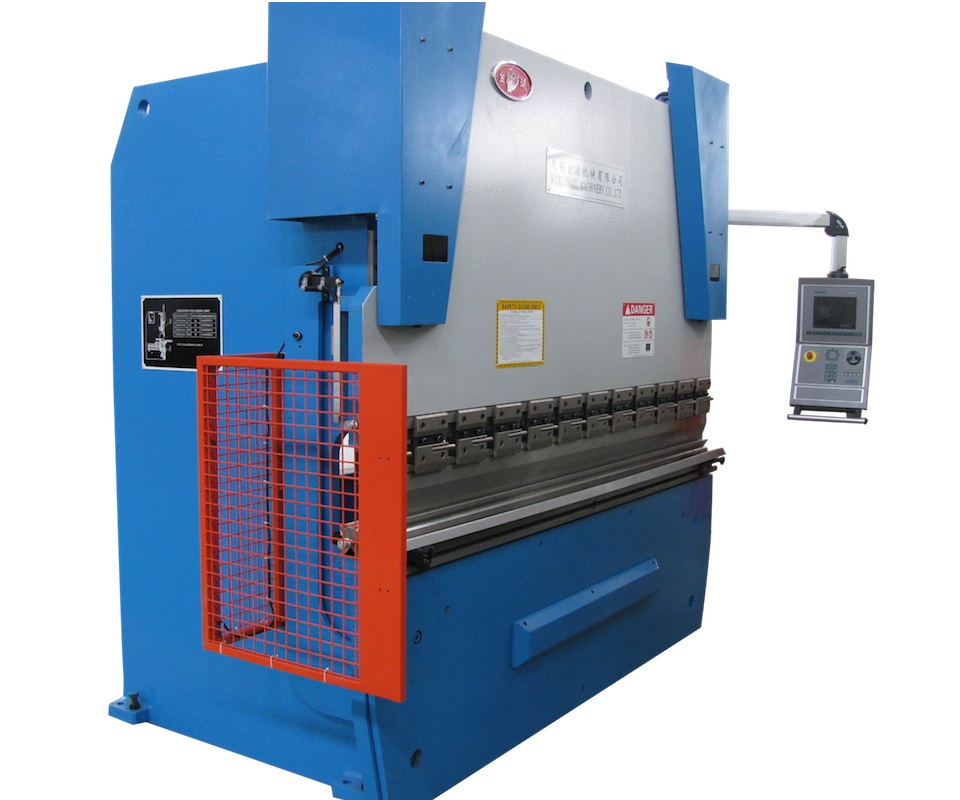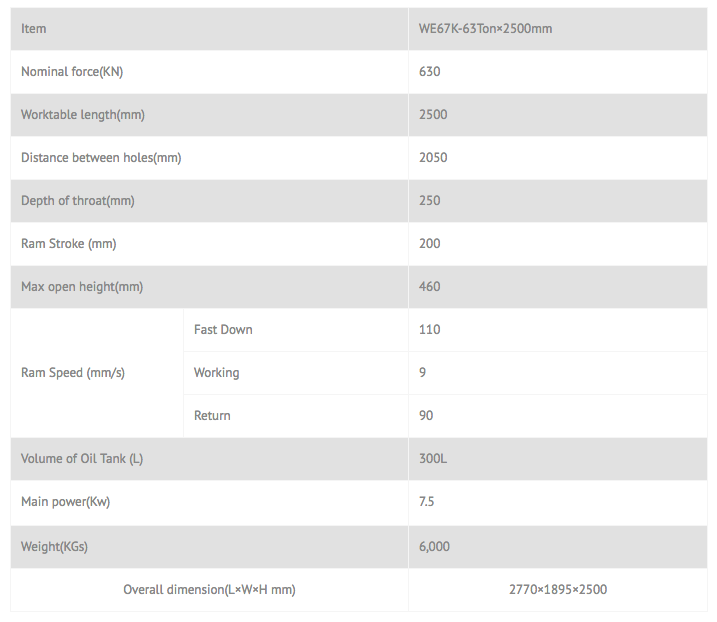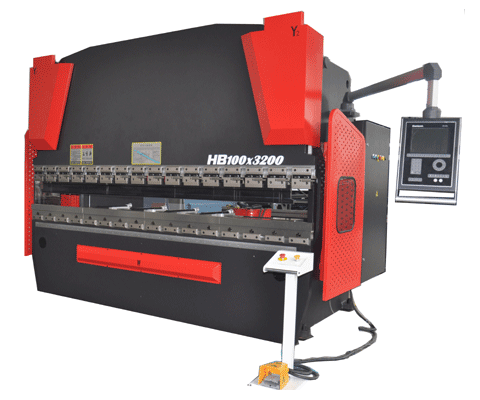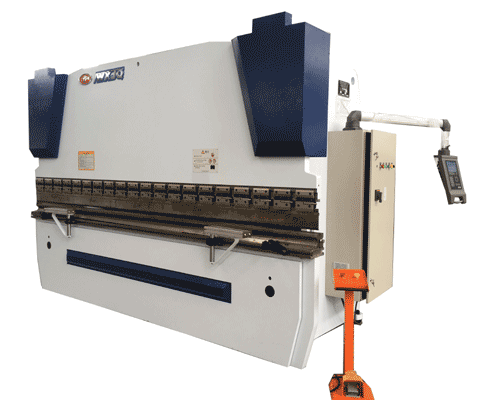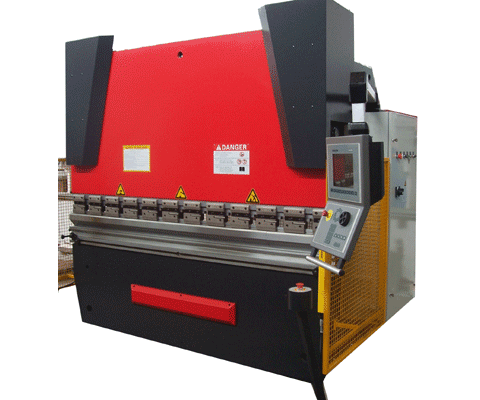
TECHNICAL FEATURES
- European CNC Hydraulic Press Brake Machine controller, with full CNC controlled Y1, Y2, calculation based on material and tool library;
- Automatic bending procedure optimization is by CNC controller. While engineer also can adjust the steps according to actual design;
- Accurate optic scaler will measure Y1, Y2. Measured signal will be feedback to CNC controller timely.
- European proportion valves will control left and right cylinder’s movement according to controller’s command.
- Back gauge is with long pitch – precision ball screw and liner guide. Moving speed is higher; repeat accurate is higher;
- Back gauge is with servomotor for X-axis. There are optional R, Z-axis.
- Back stop fingers are with two steps, which will convenient for various part fabrication;
- Ram guide is with low friction Polymer wear-resistant materials, which will give long accurate working life;
- Working table is with automatic crowning system. Hydraulic type is for up to 200T-3.2m machines, while wedge structure is applied for bigger machines.
- For bending force up to 200T, quick clamp for punch is applied as normal. so that It will be easy handle the up tooling. The clamp has wedge crowning adjust system.
- Normally Side and rear protection fences are standard for up to 200T machine. while For bigger machine, optic safety sensor will be optional.
- Generally Low noise and high efficient gear pump is standard configuration;
- Ram is with Anti-tilt device for machine protection;
- CNC Hydraulic Press Brake Oil tank is with level and temperature indicator.
- Normally Hydraulic Press Brake machine is with standard gooseneck punch and multi-V bottom die. Of course Our engineer can design tooling according to customer’s requirements. Optional 2-V or single V, narrow working table is available.
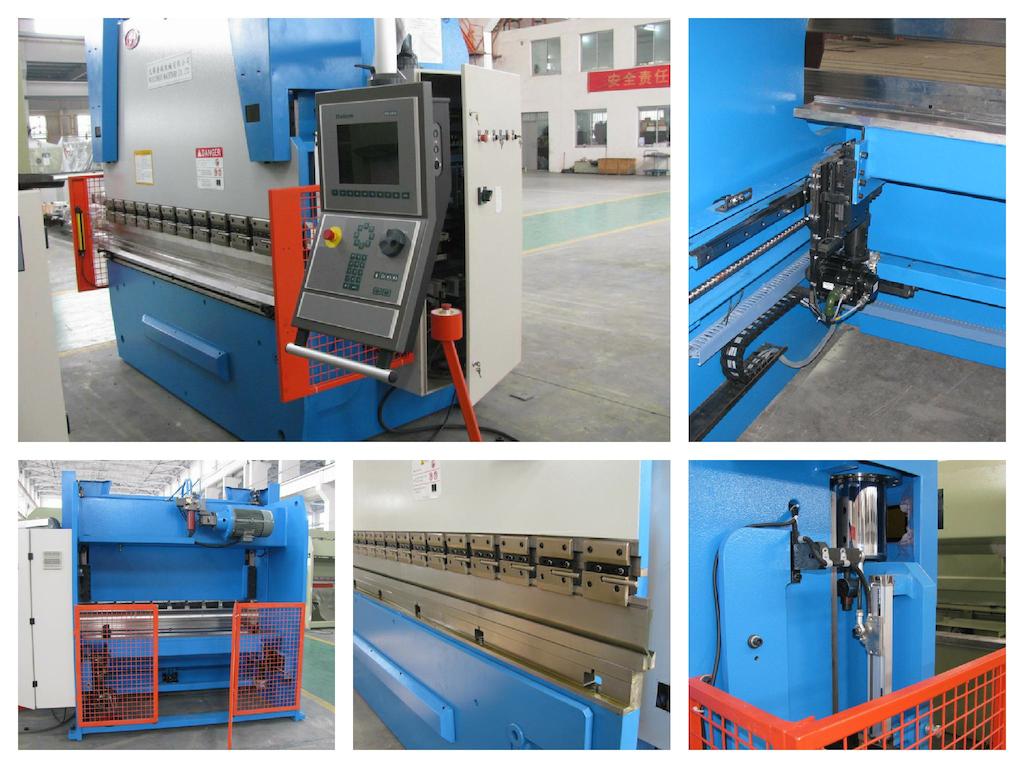
-
Estimate Bending Force Calculation or Max Bending Thickness for Hydraulic Press Brake machine
Estimate bending force calculation formula is
P=650*S*S*L/V
- P: Estimate Hydraulic press Brake Bending force (T)
- S: Plate thickness (mm)
- L: Bending Length (m)
- V: Hydraulic Press Brake Bottom die V opening width (mm)
NOTE:
- The Hydraulic press brake machine bending force calculation is based on mild steel (tensile strength = 450Mpa). For other material, we shall time constant K (related with material tensile strength, hardness, elongation). for example, Stainless plate characters can be different according to plate number. we can set K=1.5.
- Normally V (hydraulic press brake machine bottom die V opening width) can be 6 ~12 times plate thickness. for thin plate we select smaller V opening. while for bigger and Harder plate, we shall set bigger V opening. Bigger V will introduce bigger bending radius.
-
Hydraulic Press Brake machine Shipment, Unloading, Installation Related Issues
- The hydraulic press brake machine will be loaded over steel rack. During loading / unloading, we shall pull or push only over the steel rack to avoid deforming on machine body frame.
- On Machine wall frame, there are lifting hook. We shall use enough length steel wire rope or chain to lift the machine by the hook. We shall be careful to avoid machine drop down;
- For bigger capacity hydraulic press brake machine, the machine height can be close to container door top. when we pull machine out, we shall be careful to avoid damage on machine top parts. To protect the parts, we may remove hydraulic valve, motor or other components on top. Please reinstall the parts according our guide.
- As normal, The hydraulic press brake machine will be fixed by chain or steel wires inside the container, covered with plastic film to avoid moisture during ocean shipment.
- When receive the hydraulic press brake machine, Customer shall remove the steel rack under the machine, prepare foundation for the machine. Good fix and level will make machine work longer and accurate.
